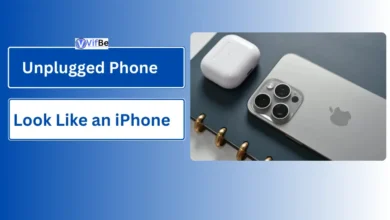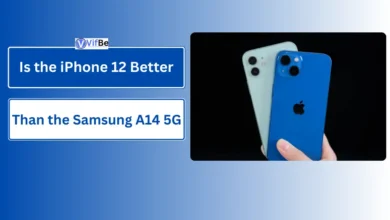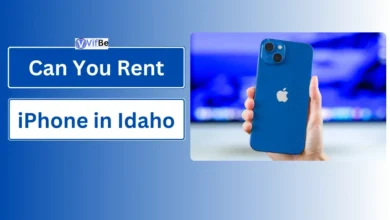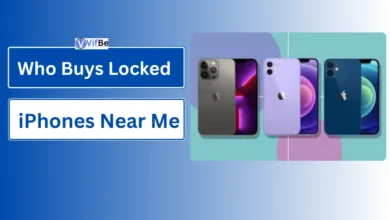Can You Charge a Rivian at a Tesla Station? Everything You Need to Know

In recent years, EVs have emerged as the main forms of transport, perception changing regarding transportation and prompt adoption of sustainable green energy solutions. Rivian is one of the popular players that have started in electric vehicles with their rugged R1T pickup and Quintessential SUV R1S.
As more EVs hit the roads, one question looms large for Rivian owners and prospective buyers: But the bigger question was if one could charge a Rivian at a Tesla station? This article provides in-depth information on Can You Charge a Rivian at a Tesla Station.
Comprehending charging compatibility
First of all, it is necessary to understand what compatibility of charging means with reference to Rivian and Tesla. Charging compatibility means the ability of two or more different brands of electric vehicles to connect to the same charging station without an extra apparatus.
As for Rivian and Tesla, this compatibility is not a simple process that depends on the charge types, charge standards, and the network both firms are using.
Rivian’s Charging Network Overview

Rivian has been keen on following onto charging mechanisms that the company is working on. The Rivian brand technology unveiled a network of fast-charging zones dubbed Rivian Adventure Network for high miles and trailhead roads.
These charging stations primarily rely on DC fast charging, which takes less time to charge Rivian than Level 2 charging stations making it possible for Rivian owners to start their journies with a lot of confidence. Furthermore, Rivian has also connected with multiple public charging networks to raise convenience for users.
Such a partnership is mutually beneficial where Rivian owners are able to locate charging stations which is very important to eliminate the problem of range anxiety among users of electric vehicles. Comprising functions like chargers and maps, the Rivian app allows a driver to discover charging possibilities rapidly.
In this context some information about tesla charging stations and compatibility could be collected:
Tesla has the largest network of charging stations with Supercharger stations far ahead of anyone else in the EV segment. All of these stations are meant to be quick chargers and are considered much faster than conventional charging so that Tesla drivers can get back on the road much quicker. However, the question remains: can Rivian vehicles add these stations?
Up to now, Rivian ones are not integrated with Tesla’s Supercharger network as standard. Tesla has so far used their standardization type of plugs and while Rivian has used the J1772 plug for Level 2 charging, it would need to use an adaptor to plug into a Tesla Supercharger. This is a common problem that multiple EV manufacturers have to deal with when it comes to charging across different networks.
Comparison of Charging Speeds
It may be necessary to understand the rates of charging before discussing the charging prices available at Tesla stations. Tesla unlike other electric car makers uses Direct Current, or DC to charge its electric cars with regenerative technology using its Superchargers wherein one can charge his or her battery within 30 minutes to 80 percent capacity.
On the other hand, Rivian’s Adventure Network also includes fast charging, however, the actual time for charging is different depending on certain parameters of the site. According to the data, the charging speed for Rivian owners will depend on the station chosen.
If a Rivian vehicle can attach its plug to a Tesla Supercharger with an adapter in place, the rate of charge could equal that of Tesla’s electric cars. Without this compatibility, Rivian drivers could be forced to rely on Rivian’s network or other third-party stations which could not deliver such high rates of charging.
Charging Etiquette and Costs
Public charging has its rule book that consumers of EVs should be aware of when they opt for public charging services. Normally, it is a per-use of the network or location and time of use of the charge on the given platform. Some station charge in kilowatt-hour (kWh) while others charge fixed tariff fee. For instance, Tesla in the past provided lifetime free Supercharging to particular models, but many charge for their usage now.
This also applies to the appropriate etiquette in using any public charging station, including the Tesla charging Sevices. This ranges from parking your car right, by not taking up the charging point once your car’s battery is fully charged and by showing courtesy to fellow EV users still waiting for their turn. By following these rules, one can make charging experiencing positive while ensuring everyone felt it was a societal affair.
Future of EV Charging Compatibility

Today, the structure of EV charging networks is rapidly developing, the emphasis on the compatibility of brands and networks. The compatibility of charging systems is gradually becoming the focus of car manufacturers as vehicles pursue improved user experience.
Hence, topics on charging plugs and prospects for conventions on enforcing them in public are emerging as topics within the industry. This arc might mean more options for Rivian owners in the future, and perhaps even direct connectivity to Tesla’s chargers in the future without adapters.
User Experiences
Thus, to reinforce an understanding of the real world effectiveness of charging at Tesla stations, its useful to review user experience. Some of the Rivian owners have reported positive experiences while others give negative feedback as to their charging experience at different stations.
There are those who have complained of the desire to get more access to the network of Tesla because it is very accessible. Others have been able to make contacts at sites that house Tesla stations, and as one of them stated, after making the connection everything goes smoothly.
Affordability concerns are less emphasised as people who have driven the Rivian R1T and R1S note that the cars are well-suited for long-range travel and they could plan their charging stations using the Rivian app. Various drivers have opted to invest in Rivian electric cars because, although they can’t directly charge at Tesla’s Superchargers, Rivian’s expansion offers them many choices.
The paper aimed at presenting the basic information about the regulatory and technical requirements of the small generators interconnected with distribution networks.
Another factor often a critical perspective is the regulations concerning the charging station installation. Currently, most governments of nations are an enabling regulatory framework concerning the establishment of charging stations and ensuring compatibility of various models from different manufacturers.
This support can result into one noting an enhanced development of charging facilities in order to meet the needs of the consumers who posses the EVs.
From a technical perspective, the issue of interoperability is defined by differences in charging plugs and protocols. An example of a naw, Rivian, using the J1772 standard for level 2 charging and considering options for level 3 types of charging. There are issues with Tesla’s closed system, albeit dialogue in the industry is suggestive of future compatibility upgrade.
Effects of Charging Points for EVs
Finally, there is the question where these charging networks are located? the environmental impact has to be thought about as well. That means the more people will be interested in receiving electric vehicles, the more it will be necessary to have stable energy sources to feed these stations.
Some networks are already sourcing renewable energy to cut down their carbon emissions, a move that will be good not only for the environment, but for the stability of the electric vehicles market as well. This study also finds that an EV owner’s environmental impact depends on the charging options available.
For example, when using charging stations that are powered by the sun, this has been found to have a big impact on emissions compared to the normal source of energy. Rivian and Tesla owners should be wary of the sustainability of charging when it comes to the advancement of the electric vehicles technology.
Understanding Rivian’s Charging Technology

Rivian’s charging technology strategy also reflects the framework that fits the company’s target clientèle. To charge the cars, the company has adopted the technique of dual charging systems, which include Level 2 charging and DC fast charging. Synchronous charges, available at public and home charging stations, are offered at Level 2, which gives slower but effective charging that is most effective overnight.
In contrast, Rivian’s DC fast chargers meant that this could be replenished much faster, allowing users to get back virtually all of the lost range in comparably little time. This dual strategy will make sure that consumers owning Rivian have options of charging their vehicles in different places that they wheel or park their car.
Also, Rivian’s app is very helpful in making trips more effortless for the drivers with avoiding the misjudgment of charging station availability and time to get charged.
Are Your Rivian Vehicles Compatible With Tesla Supercharger Network?
However, Rivian vehicles cannot charge on Tesla superchargers since the vehicles use different charging plug and charging platform. Tesla uses its own charging port for Level 2 charging and Rivian’s compatible with CCS (Combined Charging System) for DC fast charging while using J1772.
Though talks continue within the automotive industry as how exactly this is to be accomplished, presently Rivian owners would have to hustle to get an adapter to access Tesla’s Supercharger network, which is still not universal. This incompatibility therefore poses the following questions for Rivian drivers when they are in close proximity to a Tesla charging station.
However, with Rivian’s expansion of more of its own Adventure Network and collaborations with other charging networks, owners can still find enough charging stations while they travel.
Now let’s look at the differences in charging systems of both Tesla and Rivian.
Tesla and Rivian are classic examples of how different companies approach the charging infrastructure problem. Tesla’s charging solution is called Supercharger and it is spectacular as it is very broad and offers very fast charging times, with 80% charge in about 30 minutes maximum.
This network has been developed gradually, and is intended to support only Teslar cars. On the other hand, Rivian aimed to build a charging network that aligns with its positioning that is associated with the outdoors and adventures.
The Rivian Adventure Network is designed for the sort of travel that primarily covers distances and not time, and it is not uncommon to see charging stations located in some of the most picturesque, off-road worthy landscapes out there.
However, Rivian’s CHAdeMO adapter is only just beginning to roll out and, as a result, doesn’t boast the charging network that Tesla does at this point. Also, the user interfaces and charging management system vary; Tesla’s app helps to find the nearest Supercharger stations and informs of their availability, while Rivian’s app corresponds to its audience type, improving the concept of adventures.
Charging stations for Rivian: Where to locate them
Navigating to a charging station for your Rivian is easier with the help of today’s mobile applications and technology. The Rivian app features an electric charging map that allows feature consumers to find charging stations within Rivian and third-party suppliers, including locations within the Rivian Adventure Network.
The elements include information about charging speed and availability, and any probable fees in the station. Furthermore, other EV charging applications such as the PlugShare and the ChargePoint applications that are also very popular can assist the Rivian drivers identify compatible EV charging points in real-time.
Such platforms usually contain information and comments of other users, which will allow the drivers make wiser decisions on where to charge. Such issues can be easily mitigated, especially in those who plan long trips, to predict charging stations in advance to avoid such problems.
Rivian Charging: What You Need to Know Before You Go
Ever planning to go for a road trip on your Rivian or even a daily drive to your job, there are a few things that you should know about charging. First, make sure you understand the model’s range and how that fits into your mobility schedule.
The most crucial information is about the charging options not only Rivian’s Adventure Network but third-party charging stations as well. It is also important to note that the compatibility of the charging station with Rivian’s charging systems is the best way to go. Furthermore, when choosing an EV, it is advisable to download Rivian app, charging apps and these apps will update one on the current status of the charging point and the corresponding cost.
Additional factors that should be considered include extended peak charges which means some donor areas take long time to charge than others. Predicting the charging stops and familiarizing yourself with the places with good charging stations will allow you to enjoy your driving time.
Rivian vs. Tesla: Who Has the Better Charging Network?

Tesla offers both a distinctive charging approach and gains an advantage in charging location density when compared to Rivian’s network. Tesla had great coverage and density of high-power chargers which are necessary for long distance trips.
The ease of access to infrastructure is one of a kind as presently more people are able to travel without necessarily being limited by charging stations. While it is still relatively small, Rivian’s network is even now being purposefully built for a focus on such consumers, including charging stations tucked into the great outdoors for the rugged, adventure-seeking audience that the company has identified.
This positioning makes much sense for Rivian as an adventure-seeking brand that could serve its clients in territories that may not be equipped with typical charging amenities. In the end, whose network is ‘better’ is a relative term that fundamentally comes down to what the user considers more important: would they rather have the convenience that Tesla offers, or will they value the implementation of the Rivian charging equipment which is more in tune with the outdoors.
The future is charging compatible today
This is an area of keen interest and advance planning as to the future of charging compatibility in the EV market. With electric cars becoming more common, the need to have a more uniform system of charging across brands comes into the mainstream.
Decision-makers for charging networks are currently in the process of seeking methods on how to establish compatibility in the charging networks and this can work strongly in the favor of consumers. This evolution could lead to a unified charging system where vehicles from different makers, Rivian inclusive, as well as Tesla, can charge from the same stations without problems.
It is not only customers demanding compatible charging equipment but also several regulatory authorities who speak for a singular charging structure to increase the sales of EVs.
In the near future, carmakers will work together in tandem with charging networks as they create the technologies that help make charging convenient for patrons, thus changes in the EV charging structure can be expected.
Using Tesla Charging Stations: Tips for Rivian Owners
Here then are some important tips that every Rivian owner must know before using Tesla charging stations. First, every car owner has to assess the compatibility of the charging plug; Rivian vehicles primarily use J1772 and CCS plugs, so if someone wants to use a Tesla Supercharger, they have to have an appropriate adapter.
Before stopping to recharge, it may be worthwhile to phone or even look up online to see if the specific Tesla station is open and has spaces for more cars. Rivian drivers should also acquaint themselves with the charging fees that Tesla charges as this may not be similar to what Rivian charges.
Also, it is good to be polite to owners who are waiting to get their cars charged; after charging your car leave it as early as possible to allow others get charged. These are some of the easy practices that would help in enriching the overall charging encounters hence enabling all the electric car users to be united and share skills in the environment in spirit of togetherness.
What You Should Look Forward to When Charging a Rivian at Tesla Station
Pulling up to a Rivian at a Tesla station poses several outcomes: the utilization of Tesla’s charging infrastructure, coupled with compatibility issues. If you have the required adapter available it should work similarly to any other public charging station.
Be prepared to connect to a station interface to follow specific instructions, not necessarily matching Rivian standards. Charging rates also might differ, based on the type of station if it is a Supercharger, or a Tesla charging mechanism. Rivian drivers should expect that charging will be scarce, even more so if they compete for access to the Tesla stations during the busy travel seasons.
Finally, one has to be cautious of the imposition of any charges during the charging process also, keep updated with the time the station is capable of accommodating your car to allow other a chance at the chargers.
How to get notified of Charging Station updates
Keeping abreast with charging infrastructure changes is important to EV users and more so those using Rivian electric vehicles. These features give the app users updates on the charging stations and the availability, charging points in the proximity, changes in the charges or locations.
Also, users are able to receive newsletters from third-party charging networks so that they are notified on any new stations that have been established and other ongoing maintenance that may take place.
Fora like community forums and social networks also provide useful information – owners of EVs can exchange experience, discuss some updates, and problems connected with charging infrastructure. Thus, using these tools, Rivian drivers can improve their charging experiences and rule out any discomfort.
Conclusion
In conclusion, it is possible to charge a Rivian at a Tesla station and it all depends on certain conditions that include electricity specifications. Now, due to the absence of natural compatibility, owners of Rivian cannot charge their vehicles at Tesla’s Superchargers without connection to a converter.
However, new ID services keep emerging and, as the EV ecosystem develops, and more automakers strive to achieve vast compatibility, the possibility to expand EV charging choices for Rivian owners might bebuilding.
At the same time, Rivian has its own charging facilities and the list of the partners, where the company provides an acceptable range of the charging opportunities; Tesla benefits from the widely-developed Supercharger network for Tesla electric-car owners.
Finally, who wants an electric car also wants a perfect charging compatibility and thus, knowing everything that goes around these factors will help drivers have a smooth experience on their electric vehicle journey.
FAQ: Related Can You Charge a Rivian at a Tesla Station
Can Rivian vehicles charge at Tesla Superchargers?
No Rivian vehicles are compatible with Tesla’s Supercharger network, although there is a need for a cable adapter to connect the two. Although Rivian employs a set of charging connectors that is incompatible with Tesla’s, there are opportunities for Rivian drivers to acquire compatible equipment that would allow them to use Tesla’s substantial Supercharger network.
How can I find charging stations for my Rivian vehicle?
For charging point locations of your rivian, the best way is to use the rivian application which gives real time availability of the station. Also, third-party applications, such as PlugShare and ChargePoint that show extensive maps of the charging stations along with reviews and real-time availability.
Are there any fees associated with using Tesla Superchargers?
Yes, Tesla usually has per kilowatt-hour (kWh) for electricity consumed in Supercharger stations and prices may differ with place and usage. Rivian owners should also know that idle fees are charged if a car is left plugged in when charging is finished.
Can Rivian benefit from Tesla’s charging network in the future?
In the meantime, Rivian doesn’t have any direct access to Tesla’s product, which means that currently, they have no primordial access to Supercharger network, though there are more and more talks in the industry about boosting this compatibility. If so, it could dramatically improve charging accessibility for Rivian owners further, as partnerships may be formed.
How can Rivian owners maximize their charging efficiency?
Optimizing charging, Rivian owners should plot their travel to areas with charging stations, use applications to check charging station availability, and use charging during off-peak hours. This also relates with understanding the charging capacity of one’s vehicle and using the right chargers will also help improve efficiency.




